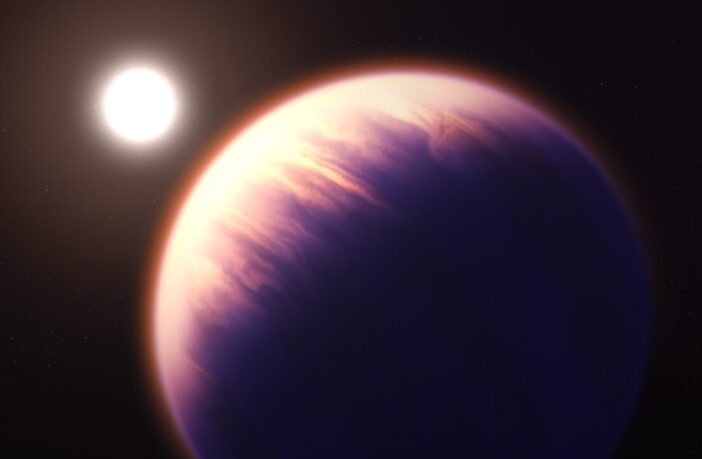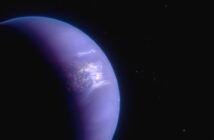Nasa’s JWST just scored another first: a molecular and chemical profile of a distant world’s skies secured by research from experts including Dr Joanna Barstow and Agnibha Banerjee from The Open University.
While JWST and other space telescopes previously have revealed isolated ingredients of the planet WASP-39b’s atmosphere, the new readings provide a full menu of atoms, molecules, and even signs of active chemistry and clouds.
The latest data also gives a hint of how these clouds might look up close: broken up rather than a single, uniform blanket over the planet.
Dr Joanna Barstow, Ernest Rutherford Research Fellow at the OU, is a member of the JWST Transiting Exoplanet Community Early Release Science team. She commented on the findings:
‘It is fantastic to have such an insight into the composition of this planet’s atmosphere.’
‘These first observations are already teaching us new things about the chemical processes that shape these planets.’
WASP-39 b, also known as a “hot Saturn” (a planet about as massive as Saturn but in an orbit tighter than Mercury) is orbiting a star some 700 light-years away.
The suite of discoveries is detailed in a set of five new scientific papers, three of which are in press and two of which are under review.
Among the unprecedented revelations is the first detection in an exoplanet atmosphere of sulphur dioxide (SO2), a molecule produced from chemical reactions triggered by high-energy light from the planet’s parent star. On Earth, the protective ozone layer in the upper atmosphere is created in a similar way.
The research has also resulted in improvements in modelling that will help build the technological know-how to interpret potential signs of planet habitability in the future.
Having such a complete list of chemical ingredients in an exoplanet atmosphere also gives scientists a glimpse of the abundance of different elements in relation to each other, such as carbon-to-oxygen or potassium-to-oxygen ratios. That, in turn, provides insight into how this planet – and perhaps others – formed out of the disk of gas and dust surrounding the parent star in its younger years.
WASP-39 b’s chemical inventory suggests a history of mergers of smaller bodies called planetesimals to create an eventual goliath of a planet.
In so precisely analysing an exoplanet atmosphere, the telescope’s instruments performed well beyond scientists’ expectations – and promise a new phase of exploration among the broad variety of exoplanets in the galaxy.
Dr Barstow added:
‘The combination of precision, wavelength coverage and spectral resolution that JWST provides has completely transformed our ability to study these distant worlds.’



